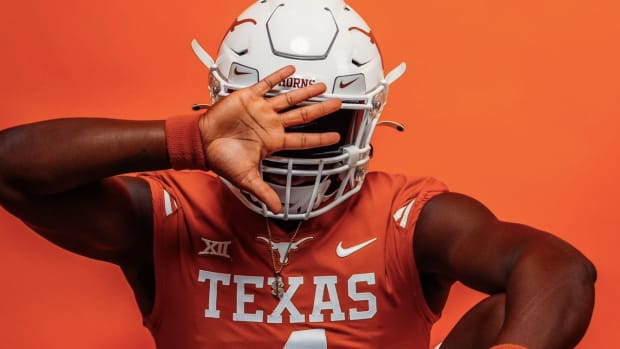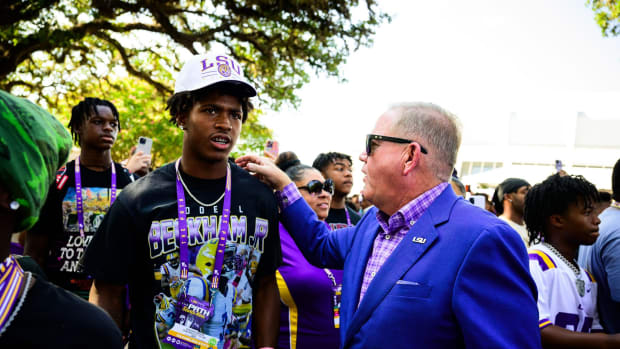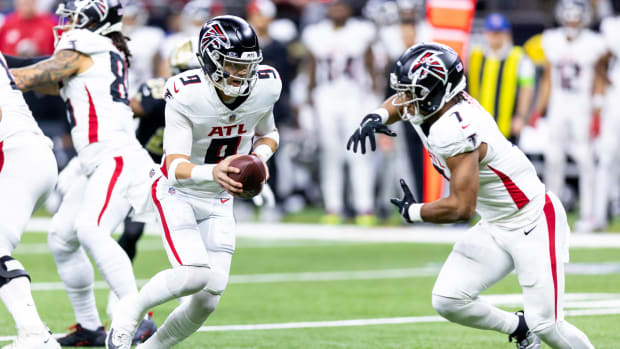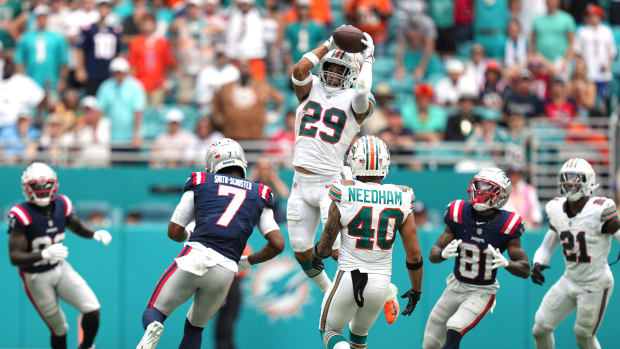Football Games in Empty Stadiums? Unprecedented Times May Call for Unprecedented Measures
Bob Bowlsby's hour-long teleconference with the media last week made two points abundantly clear. First, the league is doing everything it can to play the 2020 season safely. Second, for all its planning, nobody can really know what the world will look like, much less the sporting world, in a few months.
“Right now, our plan is to play the football season as it’s scheduled,” Bowlsby said. “If we find out that we have to depart from that, we will do so, and we will do it with plenty of time to let people know what it is we’re thinking and to challenge what we’re thinking.”
Bowlsby mentioned one idea could be playing the games in empty stadiums. While this would be an eerie site and certainly lessen the atmosphere and pageantry that comes with college football, it's certainly better than the alternative of no football at all in the fall.
“It’s hard to imagine looking up to a grandstand and seeing people sitting six feet apart,” Bowlsby said. “I think there will probably be lots of people that give consideration to what kind of public assembly they want to do. … I do think it will cause people to take pause and wonder what kinds of things they’re sharing other than enthusiasm for a game and enthusiasm for a school or a team when they go into the stadium.
“I suppose it’s possible that we can return to some form of competition before we got to the point where we were comfortable with public assembly, and we can end up with what we thought we might end up with in basketball and that is playing in front of no crowd. On the one hand, that allows you to watch it on television, but the environment would certainly be far poorer as a result of not having an enthusiastic crowd in the stands.”
While keeping people safe is always the chief priority for the Big 12 governing body, it's impossible to talk about cancellations and empty stadiums without bringing up the heavy price tag that would entail. Some of the bigger athletic departments might be able to dip into reserve funds, but a year without football revenue would mean massive cuts for some other schools.
“[Football is] a driver from a popularity standpoint, it’s a driver for schools from a fundraising standpoint, it’s a big driver from a TV standpoint, and it’s a big driver from ticket sales and revenue standpoint,” Bowlsby said. “We haven’t done a lot of modeling, we haven’t done a lot of planning because I just think it’s far too early to do that. We certainly are looking at the next 60 to 90 days, and I think depending on how that goes we’ll begin modeling around what the fall looks like. You could spend a lot of time with it and find out two weeks later that the circumstances have changed and your computations are no longer viable.”




